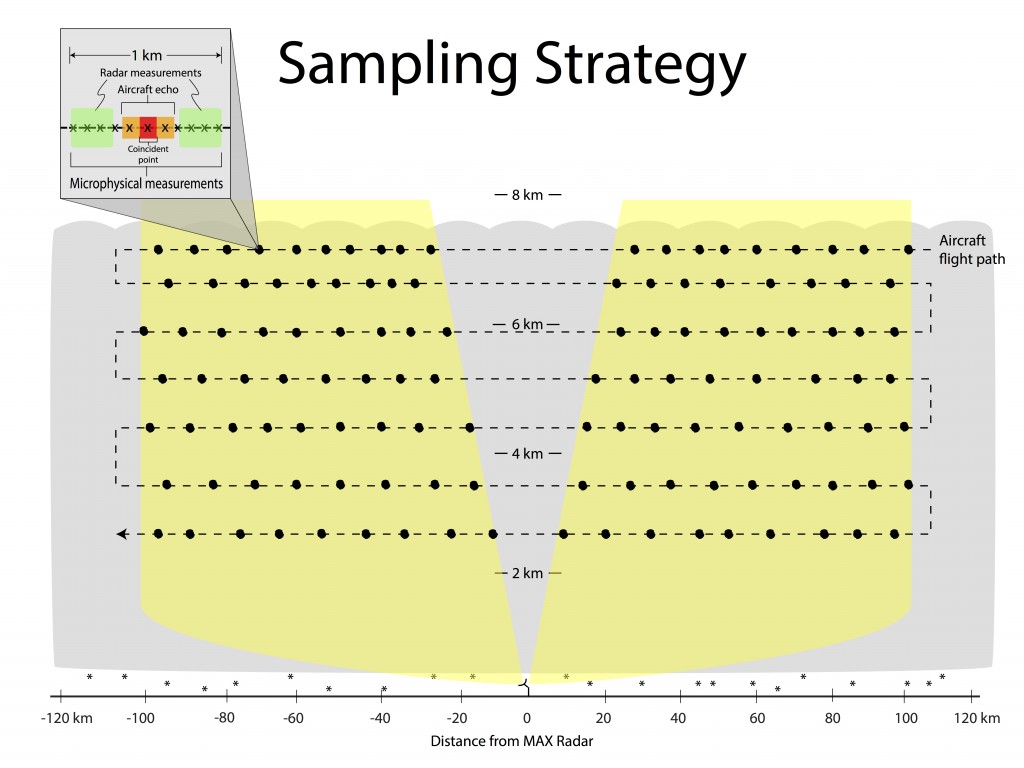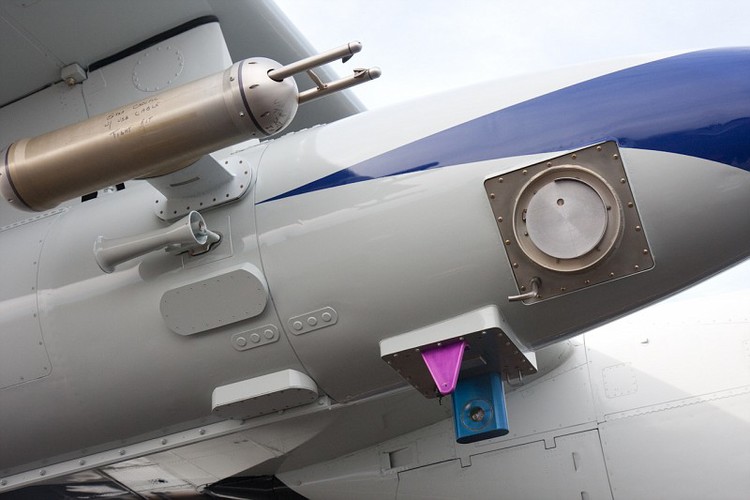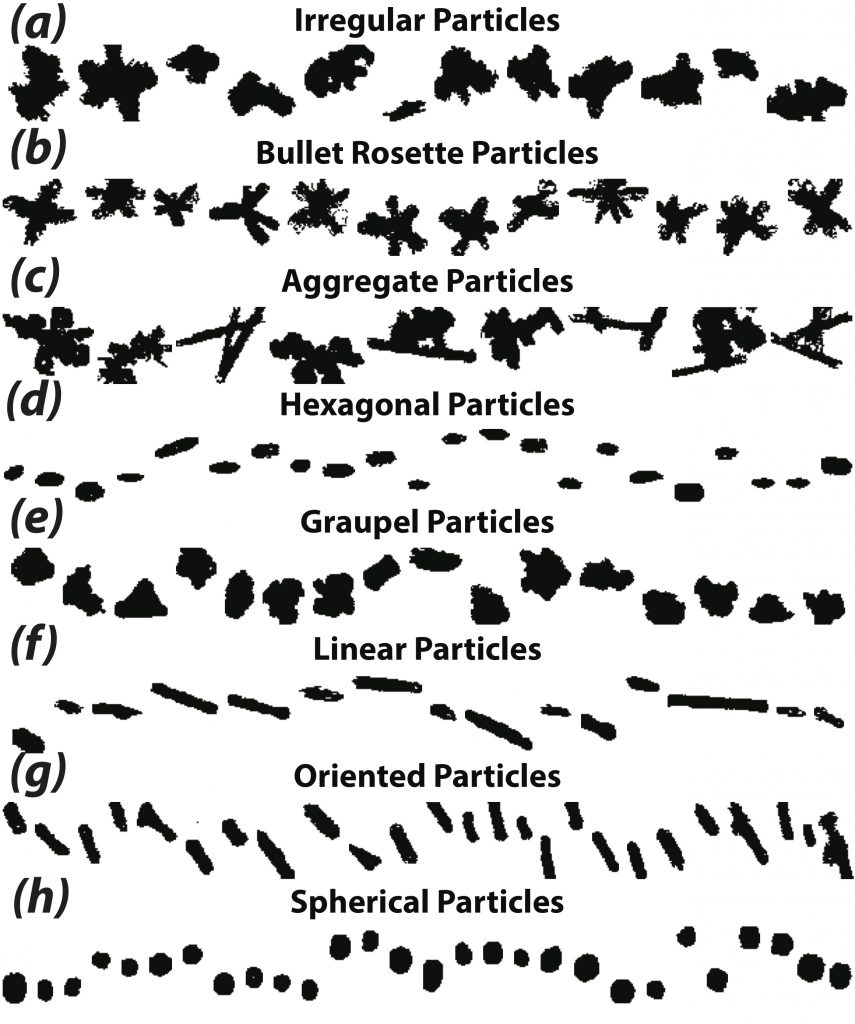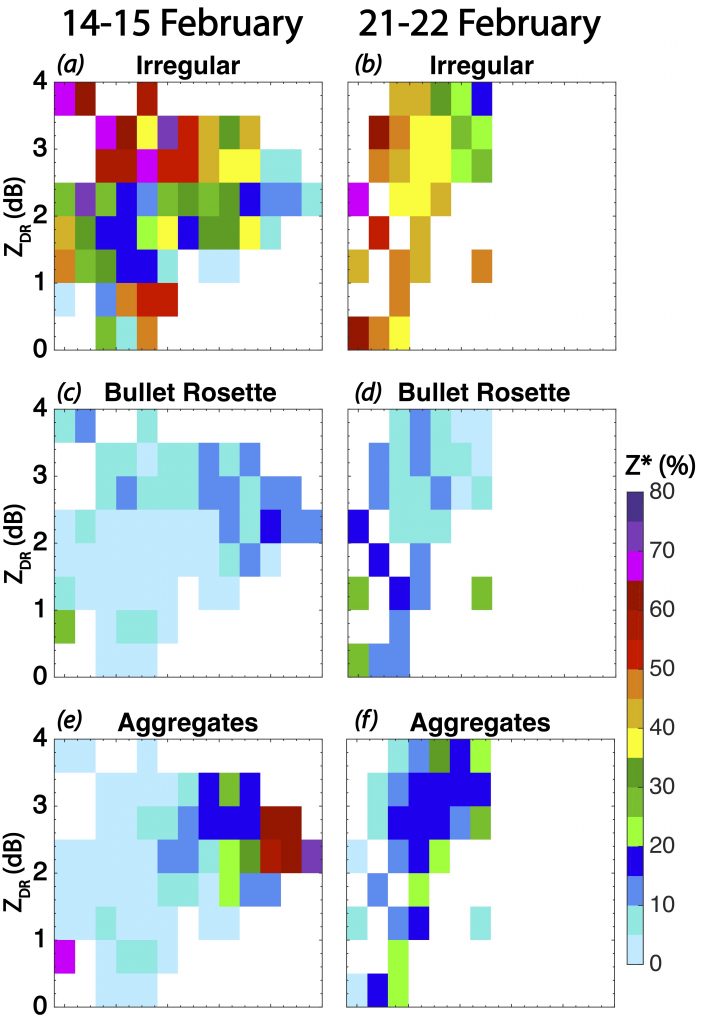Motivation: Since the advent of dual-polarization radar, methods of classifying hydrometeors by type from measured polarization variables have been developed. The deterministic approach of existing hydrometeor classification algorithms of assigning only one dominant habit to each radar sample volume does not properly consider the distribution of habits present in that volume, however. My M.S. work employed a probabilistic approach to establish possible habits of ice particles and microphysical quantities within a radar sample volume.
The setup: For some of the cyclones sampled during PLOWS, the National Science Foundation/National Center for Atmospheric Research (NSF/NCAR) C-130 aircraft flew over the same path as the Mobile Alabama X-band (MAX) dual-polarization Doppler Radar. This allowed the collection of reflectivity and dual-polarization variables coincident with in-situ cloud microphysical measurements.
The results: After all particles and their corresponding habit within a particular range of radar Z and ZDR are identified, each habit’s contribution of reflectivity to the total reflectivity is computed. This provides information regarding which habits are most likely to influence the radar Z for given radar conditions.
A link to the full text paper is found here: https://doi.org/10.1175/JAMC-D-16-0059.1






